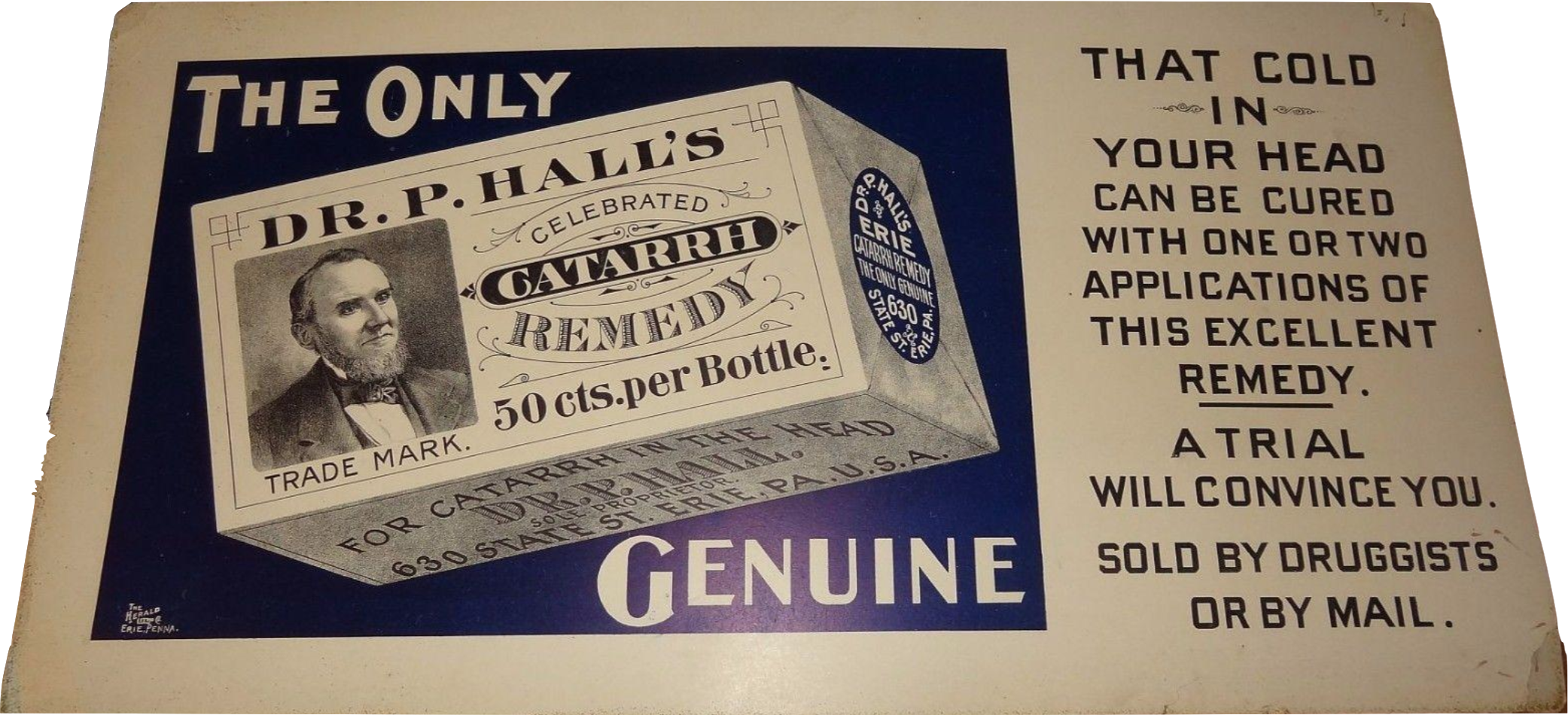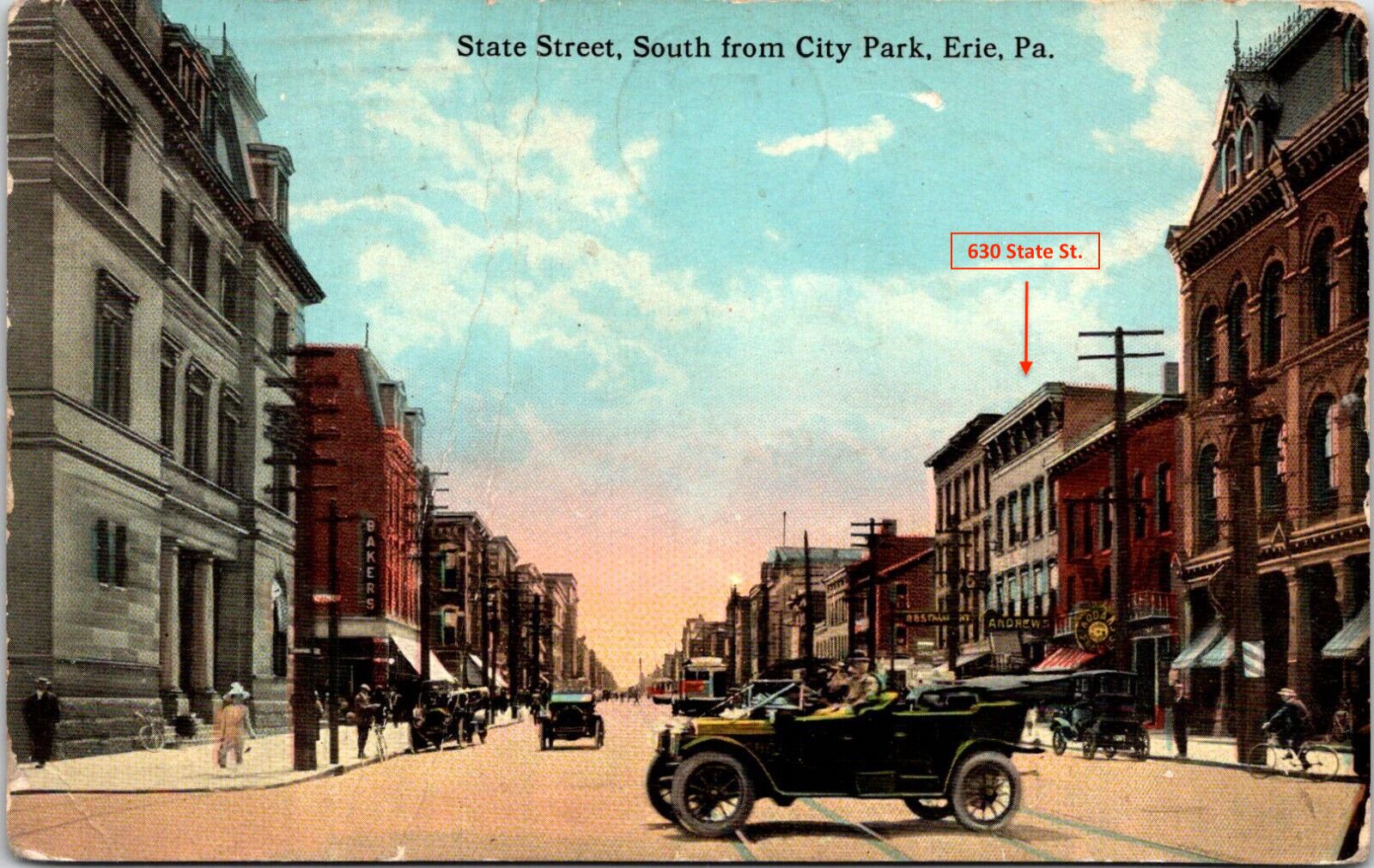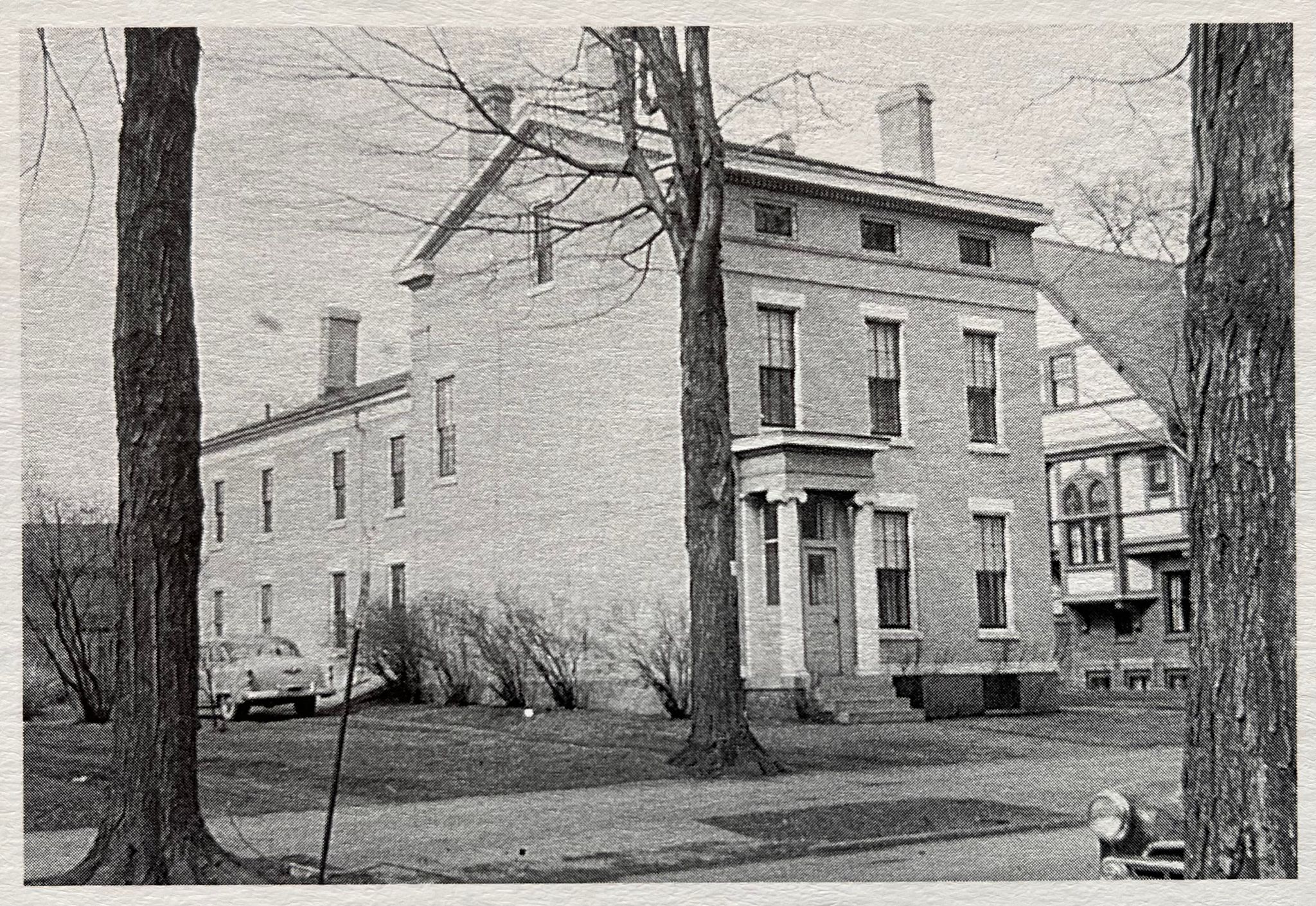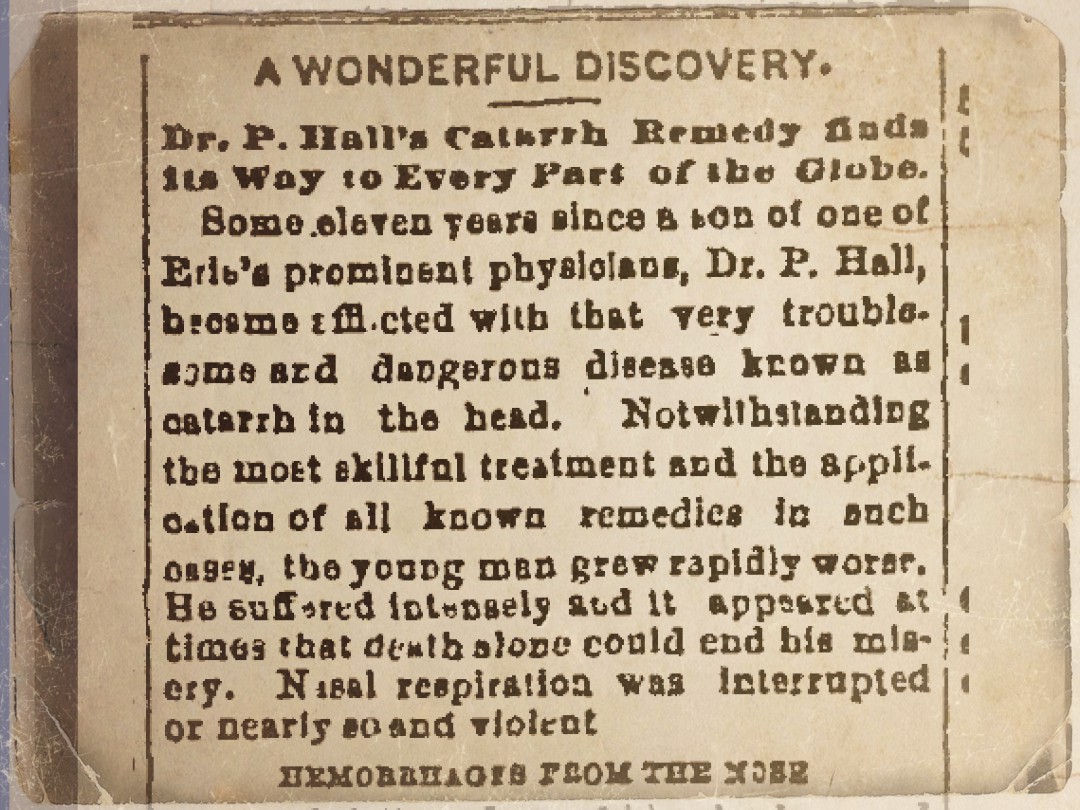Officially a buildup of mucus, some of us know catarrh as postnasal drip. And if you lived in northwestern Pennsylvania during the second half of the 19th century you were in luck, because one of the most celebrated catarrh remedies was developed in Erie by Dr. P. Hall.
Born in 1820 in Washington County, NY, Peter Hall’s parents moved to Crawford then Erie County in 1821. Peter studied at the Waterford Academy, then attended the Geneva (NY) Medical School. He moved back to Erie in 1843, where he opened his first druggist shop a year later. In 1852, Peter married Catharine Warfel, daughter of future associate Martin Warfel, and had seven children.

Advertisement for Dr. P. Hall's Celebrated Catarrh Remedy
Dr. P. Hall’s apothecary shop was located at 630 State St., just a five-block walk from his home at 238 W. 9th St. Hall shared the three-story building with an attorney and barbershop. Also a seller of paint, Dr. P. Hall was most well-known for his cough and catarrh remedies.

Dr. P. Hall's office at 630 State St

Hall Family Home at 238 W. 9th St.
A Wonderful Discovery was how The Erie Morning Dispatch (January 25, 1887) described his catarrh remedy. According to the Dispatch, one of Hall’s sons had been afflicted with the disease 11 years earlier. No existing treatments helped and “it appeared at times that death alone could end his misery.” It was at this point that Dr. P. Hall, after consultations with eminent medical authorities, prepared a prescription that “produced the most wonderful results.” Dr. P. Hall’s Celebrated Catarrh Remedy was born.

From The Erie Morning Dispatch (January 25, 1887)
While the remedy’s ingredients are unknown, the salve was to be applied to the nostrils 6 to 10 times a day. (Math indicates this would be about every 1.75 waking hours, suggesting that a person would have to occasionally stick their finger up their nose in public.)
Customers were also advised to beware of imitations and always specify “Erie.” Only 220 miles away in Toledo, OH, the “sound-alike” Hall’s Catarrh Cure was being aggressively marketed by Frank J. Cheney. A liquid rather than salve, Cheney’s cure was more expensive, selling for 75 cents in comparison with Peter Hall’s 50 cents per bottle.
That wasn’t the only difference between bottles. Where the Toledo bottles were light green, Peter Hall’s bottles were clear. To make the glass as clear and colorless as possible, glassmakers added manganese dioxide. But through an intriguing photochemical process, the manganese dioxide in Peter Hall's bottles gradually changed the glass to a purple hue when exposed to ultraviolet radiation over a period of time.
Dr. Peter Hall remained in business until close to his death in 1907. The State St. building that housed his office was torn down in the mid-1900s to build Erie’s new City Hall. Peter Hall’s son, Charles, lived in the family’s West 9th St. home until his death in 1966, when it was demolished to expand nearby parking.
From all accounts, Dr. P. Hall was one of the most reputable Erie physicians/druggists of his time, genuinely committed to easing the suffering of others. In the words of the February 19, 1907 Erie Times-News, “His passing away closes one of the longest, the fullest, and the richest biographical chapters of Erie history.”
